We recently published an interview with Lasse Braun that covered the early years of his career – as a distributor of pornography in Europe in the 1960s and a prolific maker of early loops, through to the substantial success of his feature film ‘Penetration’ (aka ‘French Blue’) in 1974.
If he’d never done anything else, his role as one of the most important pioneers of adult cinema would be secure.
However over the next 30 years, Lasse Braun continued to make films – traveling around the world to shoot in a surprising number of different places, including New York, Italy, California, Hong Kong, Ibiza, England, and Utah.
What follows are Lasse’s memories of the second half of his life – including the making of ‘Sensations’ (1975), ‘Body Love’ (1978), and ‘American Desire’ (1981), being exiled from Europe, making videos for Reuben Sturman and ‘Walter Dark’ in the 1980s, shooting soft-core films for cable television, working with Alex De Renzy and Ron Sullivan (‘Henri Pachard’), and introducing his son, the hugely successful Axel Braun, into the adult film industry.
Sadly Lasse Braun passed away on 16th February 2015 aged 79. We’re pleased to be able to present the second part of this overview as a tribute to the life of a pioneer.
For the first part of the Lasse Braun interview, click here.
_______________________________________________________________________________________________
9. ‘Sensations’ (1975)
After distributing his pioneering loops in the United States through Reuben Sturman in the early 1970s, Sturman decline the opportunity to be involved in Lasse Braun’s first feature length film, ‘Penetration / French Blue’ (1974).
Reuben Sturman had the chance to distribute ‘Penetration / French Blue’ (1974) but he’d thought it was too arty and un-erotic for American audiences – so he passed on it. When it turned out to be a big success, what was his reaction?
He was amazed… and a little bit pissed off. I went to see him in Cleveland after the film came out, and we talked about making a big budget 35mm hard core film that would be even bigger than ‘French Blue’.
When you say ‘big budget’, what did you have in mind?
I wanted $250,000. I already knew what I wanted to do. I wanted to make a narrative film, not a documentary like ‘French Blue’, and one that would be very erotic and hard-core. I had a script in mind called ‘Sensations’.
I talked with Daniel Bourla (the American distributor at Variety Films who had been behind ‘French Blue’), and he said that we should take it to the 1975 Cannes festival.
Was Reuben interested this time?
Yes – I asked for $300,000, and he gave me $250,000 in cash for exclusive North American rights in perpetuity. I also gave him the rights to have the world premiere. So I went back to Europe to film it.
Where did you shoot it?
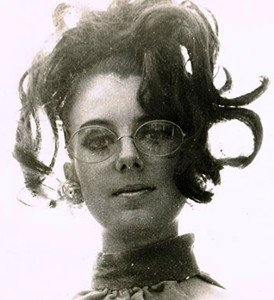 We shot it in different locations like Amsterdam, Dover, Brussels, and Breda. It was the story of the erotic adventures of various people who meet each other by chance. I got Brigitte Maier back to star again because she was a bigger star now because of ‘French Blue’. I also persuaded Tuppy Owens (right), my old friend from Copenhagen to appear as well.
We shot it in different locations like Amsterdam, Dover, Brussels, and Breda. It was the story of the erotic adventures of various people who meet each other by chance. I got Brigitte Maier back to star again because she was a bigger star now because of ‘French Blue’. I also persuaded Tuppy Owens (right), my old friend from Copenhagen to appear as well.
You had a talent for casting striking looking people in your films…
It’s important to find people who are interesting to look at on screen. I liked to have people of all races, all different shapes, and old people too. We used this actor called Robert Le Ray, who had been an actor in some classic French films of the 1940s; he’d been a dancer at the Folies Bergère and he was in his 70s when he became a porn actor!
And you attracted strong crews as well.
We had a lot of notable people who wanted to be involved. Falcon Stuart came back, and also Ian Rakoff who had worked with Lindsay Anderson and on the film ‘Deliverance’ (1972).
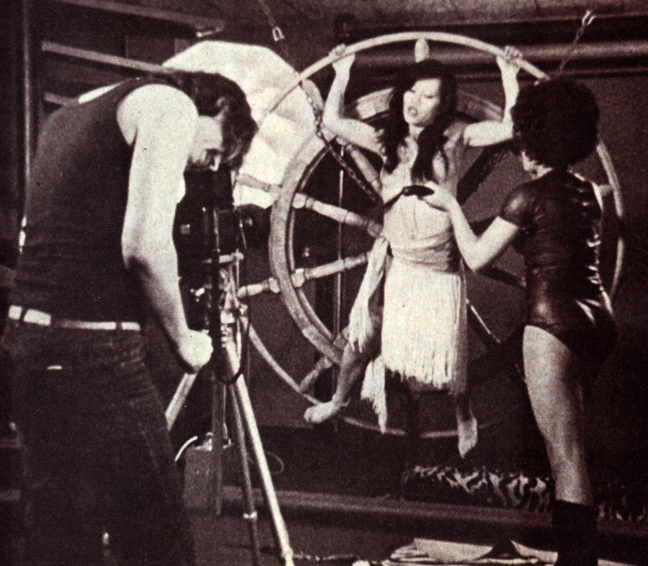 Prodcution still from ‘Sensations’ (1975)
Prodcution still from ‘Sensations’ (1975)
How long was the shoot?
We shot for 12 days – starting at the end of January 1975. The final scene was shot back in Breda – which was an orgy scene shot in my bedroom with Brigitte the center of the sexual attention.
It was very tight as we wanted to be ready for the Cannes festival in May. Reuben came over to see us when we were filming in Amsterdam. He was patient and supportive, but we had so much to do that he doubted we were going to finish in time.
How did it turn out?
A masterpiece! It was the best porno I had seen.
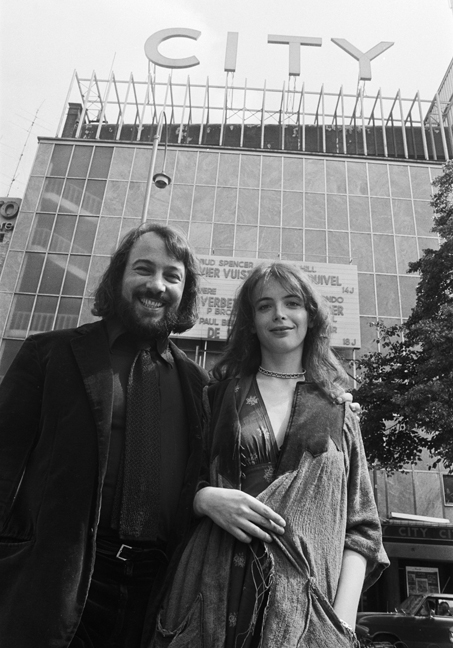 Lasse Braun, Brigitte Maier
Lasse Braun, Brigitte Maier
When did you first show it?
The first showing was a private showing in Amsterdam. We hired a private screening room and invited friends and collaborators. Reuben returned to Amsterdam with his entourage to join us. Everyone went crazy. They stood up and applauded!
I was confident about its success so I personally paid for a double page spread in Variety magazine to publicize it.
And you then took it to Cannes?
Not me personally – I was still banned from entering France… but we got the film into the Olympia Theater for seven midnight showings. Falcon managed the whole operation in Cannes again – just like he did for ‘Penetration’. The irony was that Reuben attended the premiere… The big American pornography king was allowed to watch my film, and not me!
Afterwards Reuben told me a funny story. He was in a car going to the theater on the first night, but they got stuck in bad traffic due to large numbers of police and crowds in the streets. He thought there must have been a terrorist attack or something. In fact it was actually thousands of people who were trying to get to see ‘Sensations’. The cinema held about 1,000 people, but there were probably 10,000 outside! They had been lining up from the middle of the afternoon.
What was the reaction when people saw it?
People liked it. The critics like it. Everybody liked it. One newspaper, the ‘Nice-Matin’ said “Forget the official Cannes awards… ‘Sensations’ is the moral winner of the festival”. David Bowie was interviewed in Playboy and said that ‘Sensations’ was one of the ten films to save in the event of a nuclear war…
The theatrical market for hard core films was smaller in Europe than in the U.S., but ‘Sensations’ was one of the first films to get a general release in cinemas. How did that happen?
We sold the rights in France to a conventional film distributor called Jules Innocenti for $100,000 plus 50% of the box office. Jules wanted to rush it into the theaters to take advantage of the good publicity from Cannes – but we’d promised Reuben that he could show it first in America, so Jules had to wait until later in the year.
How did you transport the print of ‘Sensations’ into America?
With great, great difficulty… I offered to help, but this film was Reuben’s big investment and he wanted to do it his own way. He was this big shot porno businessman but he didn’t realize the difficulties of trying to bring a porn film into his own country.
What did he do?
Amazingly he tried shipping the inter-negative directly into JFK airport. He attached some footage from the 1974 football World Cup to the beginning of each of the nine 35mm film reels hoping that this would disguise the real content! It was a crazy idea…
Did it work?
When Reuben sent someone to pick up the film from JFK, they were told that all the reels had been seized for a few days until the U.S. Customs officials had time to view the content. Reuben went crazy. If they found that the reels were all pornographic, he would lose his investment and be arrested, and they would come after me as well.
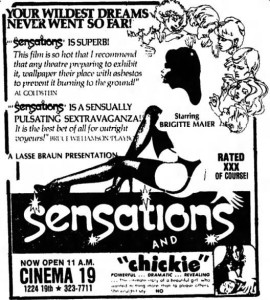 I told Reuben to leave it to me. I arranged for a friend of mine to send the U.S. Customs an urgent telex from ‘Belgian Interpol’ – saying that the cargo had been shipped to America by mistake by a Catholic University, and it needed to be returned to Brussels immediately. Amazingly it worked; the U.S. customs sent it back without looking at it!
I told Reuben to leave it to me. I arranged for a friend of mine to send the U.S. Customs an urgent telex from ‘Belgian Interpol’ – saying that the cargo had been shipped to America by mistake by a Catholic University, and it needed to be returned to Brussels immediately. Amazingly it worked; the U.S. customs sent it back without looking at it!
I then paid a couple of friends $1,000 to bring the film on a flight from Brussels to Montreal, and then to fly to New York. I gave them a fake letter to give to customs if they were asked any questions. The letter said that the film reels were a scientific documentary. My friends were in fact stopped by customs in New York, but they produced the letter, which got them out of any trouble.
Then Brigitte took the film reels with her and flew on to Reuben in Cleveland. He couldn’t believe we’d resolved the problem so quickly. He asked me, “How can I thank you?” I said, “Take out a full page ad in the New York Times for ‘Sensations’!”
It cost him nearly $20,000 but I wanted to make a big statement. It was the last time a porn film was advertised in the Times. Our ‘Sensations’ ad caused such an outrage that they prohibited it after that. It appeared a couple of days before the film’s premiere.
When did ‘Sensations’ premiere in America?
On 4th November 1975. I wasn’t there but it did well, and Reuben was happy to have the film to distribute around the country. He made a lot of money from it.
Your agreement with Reuben didn’t give you any share of the profits, unlike your deal in France where you were getting 50% of the box office. How well did you do from the French release of ‘Sensations’?
Ha! I remember sitting down one night and doing some calculations. Jules Innocenti, the French distributor, had booked the film into about 240 of his theaters in France as soon as the film had premiered in the U.S. This was going to be a big, big release. He told me that over the next three months, he would take in about $40 million – and half of that would be mine.
This would change everything! I started to think about using the money to make a film that would be my life’s dream… I wanted to make a sex film starring a famous actress. This would break down barriers and eliminate all differences between sex films and ‘Hollywood’ films. I thought of Catherine Deneuve. Or Jane Fonda. I would offer them so much money that they couldn’t refuse. The film would make everyone start talking about sex in films, about honesty and hypocrisy, about openness.
Then… catastrophe.
On 30 October 1975, the French government banned any porn film that was made outside France. Just like that. Overnight ‘Sensations’ wasn’t allowed to be shown there. The dreams of my $20 million disappeared.
Why was this law passed?
Probably because the government and film industry had the same realization as I did. That maybe real sex would start to be part of ‘normal’ films, and the French always considered their cinema industry to be too ‘pure’ for that.
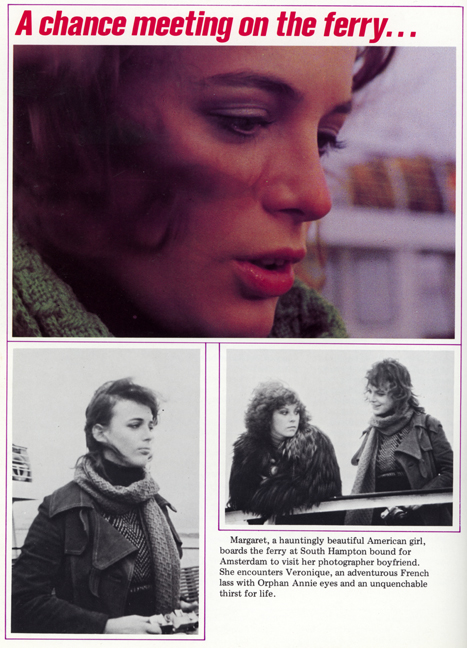 Publicity for ‘Sensations’ (1975), with Brigitte Maier
Publicity for ‘Sensations’ (1975), with Brigitte Maier
There was nothing that could be done to release the film in France?
Innocenti re-cut ‘Sensations’ and dubbed it so that he could call it a ‘French’ film. Then he released it quietly in about 30 of his smaller cinemas in the south of France. But he’d already spent so much money in publicity… in producing 300 copies of the film, in dubbing costs, in lawyer’s fees… he never made any money. I felt bad for him. This should have been his biggest success.
How about you? Did you end up making money from it?
I couldn’t sell it to the U.K. because of their crazy censorship laws, and Italy and Spain were difficult as well because of the Catholic Church. The only other big market was Germany and I so I sold it there and it did pretty well.
It was more successful than films like ‘Deep Throat’ (1972) and ‘Emmanuelle’ (1974), but overall I didn’t make more than half a million dollars from it. Much less than the $20 million I hoped for…
What effect did this have on you?
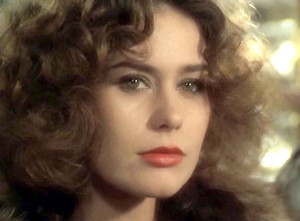 Looking back, it was a big crossroad in my life. I started to become discouraged. I’d been fighting the forces of repression for over ten years. We’d made big progress, and I’d made good money – but I wasn’t interested in doing the same thing for ever unless I could break sex into the mainstream industry.
Looking back, it was a big crossroad in my life. I started to become discouraged. I’d been fighting the forces of repression for over ten years. We’d made big progress, and I’d made good money – but I wasn’t interested in doing the same thing for ever unless I could break sex into the mainstream industry.
I was approached to make a sequel to ‘Emmanuelle’ called ‘Retour a Roissy’ with Corinne Clery (right), who had been in the successful soft-core adaptation of ‘The Story of O’ (1975). I insisted that it had to be hard-core, but Clery refused so it never happened.
That was the final straw, and I decided to that I need a change my world.
What did you do?
At the end of 1975, I cut back on the staff in my Breda operations. I sold most of the equipment and let people go. It was expensive to have permanent people to look after. I figured that from now on I’d only hire people on a film-by-film basis.
But you were still making series of loops at Breda, just like in the old days?
Yes, but they were mostly being made by other people on a film by film basis – like this great photographer, Gianni de Martiis. He made a series of three films called ‘Big Tits’, and then another series of six called ‘V.I.P.’ He did a great job with those, but my involvement was small.
The last ever series that we made in Breda was called ‘Breda ’76’, and I personally made those.
Was it sad to be winding everything down there after many happy years of having a community of similarly-minded artists?
Not really. I was tired and bored of making the same type of films. By now everyone was making them – especially filmmakers in Holland and Germany.
I created a new company in Germany – called ‘Lasse Braun Productions GmbH’ – to take advantage of our biggest market, and I put a guy called Gerd Wasmund in charge.
Gerd was this small, aloof, ambitious guy, who’s face reminded me of the Nazis I’d seen when I was a kid in Germany. I had big hopes that he’d make the German operations very successful.
What did you want to do next?
In the back of my mind, I wanted to move to a warmer, sexually liberated environment. I liked the idea of Ibiza or California. I thought this would be the next best place to take our sexual fight.
*
10. ‘Love Inferno’ and ‘Body Love’ (1976 – 1977)
What do remember about the production of ‘Love Inferno’ (1977)?
As I was selling up in Breda, I was contacted by a German porno company called ‘Love Film’. They’d copied my business model for short films, and had become the biggest producers of Super 8 sex films in Germany so I knew them well.
They were run by this guy, Manfred Menz, who loved ‘Sensations’ and now wanted me to make a similar film with them. I had a script called ‘Love Inferno’ which required a budget of $200,000. Manfred gave me half that, and I put the rest in.
We started shooting in June 1976, but I made the mistake of using a crew that was new to me and I wasn’t happy with the quality of their work.
What do you remember about the star of ‘Love Inferno’ – Catherine Ringer?
I can’t remember how I found her, but she was a theater actress and dancer who was 19 when I met her. She was a strong, forceful, aggressive and headstrong girl, and I fell in love with her thick dark hair, especially in her pubic area. It wasn’t difficult to convince her to appear in a hardcore film because she was such a rebel, an iconoclast, an anarchist.
Catherine Ringer went on to become a singer, musician, songwriter, dancer, choreographer and mainstream actress. As part of the group ‘Les Rita Mitsouko’, she became one of the most famous singers in France.
I remember after she became famous whenever I turned on my TV… she was singing on every program. She was a force of nature.
She was also in your next film ‘Body Love’ (1978).
And so was ‘Glenda Farrel’ – whose real name was Christine Dunning, a Swiss girl from Geneva. I had such a love affair with her. Incredible girl.
We shot it at this magnificent castle at Groeneveld near Amsterdam in August 1976, which was an incredible location.
How did you get permission to film there?
The castle belonged to the state of Holland, but the lady who was ran the property was a big fan of ‘French Blue’ so she let us use it for a week.
‘Body Love’ feels like a more accomplished film than ‘Love Inferno’.
‘Body Love’ is a really good film; I still think that it is my most under-valued movie. It ends with this orgy scene that lasts over 20 minutes that I think works well even today.
It was shot by Peter Sinclair, an excellent cameraman who took the name ‘Peter Focus’ on ‘Body Love’. He became a very successful director of music videos in the 1980s.
Peter Sinclair went on to shoot music videos for AC/DC, Peter Gabriel, and INXS. He shot Madonna’s video for ‘Like a Virgin’ and Culture Club’s ‘Karma Chameleon’. He is a currently a cinematographer for British television.
How did the musical score for ‘Body Love’ come about?
Manfred Menz, my financial backer, showed a rough cut to his friend, Klaus Schulze, who was a famous electronic music composer, an ex-member of Tangerine Dream. Klaus is a genius – like a modern day Beethoven – and he called me to say he liked the film, and wanted to compose the soundtrack for it.
The soundtrack album was a successful LP around the world, and helped promote the film.
How did you distribute ‘Body Love’?
We finished the final cut of ‘Body Love’ in November 1976, and whilst we were working on it ‘Stern’ magazine in Germany did a five page article on us. Beate Uhse saw this, and immediately made us an offer to buy the German rights. The money she gave us covered all the production expenses for ‘Body Love’ and ‘Love Inferno’, and also made us a profit – so we accepted immediately.
Beate Uhse (1919 – 2001) was a German pilot and entrepreneur. The only female stunt pilot in Germany in the 1930s, after World War II she started the first sex shop in the world. The company she started, Beate Uhse AG, went on to be listed on the Frankfurt Stock Exchange.
How successful was ‘Body Love’?
It was pretty good. We premiered it in January 1977 in Hamburg, and then showed it at the Cannes Festival in May 1977. Unfortunately the film broke during the projection – and I took that as a sign, as a divine message… that I should start to do something new.
Having closed up the Breda studio, you made your final series of loops in London – a series of eleven films called ‘London ‘77’. Censorship in the United Kingdom was particularly severe throughout the 1970s and 80s, so did you experience any difficulties?
The biggest difficulty was just entering the country! I flew into Heathrow in February 1977, and the customs officers took me aside and searched me.
And what did your baggage contain this time?!
I had £50,000 in cash, and lots of sex toys that I was going to use in the London films…
Like what?
I had ropes, dildos, paddles, harnesses, strap-ons, nipple clamps, chains… I had everything!
And what was the reaction of customs?
They asked me what the purpose of every individual item was, so I demonstrated to them how to use them all! They were laughing throughout my presentation.
Did they know who you were?
Yes – and they figured out that I was coming to the country to make sex films, but they couldn’t arrest me for my intentions, so in the end they let me go.
How did you make the films?
I had all my favorite British collaborators help me. Falcon Stuart was the production manager, Peter Sinclair came to work the camera, and Vivienne Westwood helped me do the casting…
(Dame) Vivienne Westwood is an English fashion designer and businesswoman, largely responsible for bringing modern punk and new wave fashions into the mainstream. In 1977 she came to public notice making clothes for Malcolm McLaren‘s boutique in the King’s Road, which became famous as “SEX”.
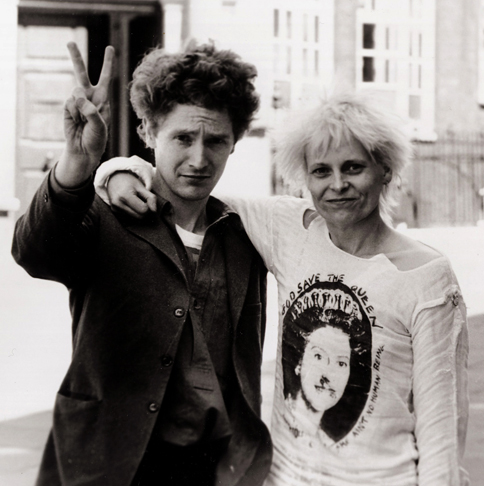 Vivienne Westwood (right, with Malcolm McLaren)
Vivienne Westwood (right, with Malcolm McLaren)
How did Vivienne Westwood come into the picture?
She’d been friends with me for a few years. I liked her fashions, and she loved the kinky S&M aspects of the films I’d made. When I arrived in London, I lived in Blake’s Hotel in Kensington, and I held casting sessions there. She sent over all the girls that we used – who mostly came from the punk fashion scene.
How did the shoot in England go?
We had a good time – and shot all eleven loops throughout the month of March 1977. These were technically the best short films we ever made because of the standard of the English crew.
My favorite was called ‘English Schoolgirls’ – which was a shocking film because of an extraordinary golden shower scene… which cost me an extra $50!
*
11. Moving to America: Alex De Renzy, the Mitchell Brothers and the West Coast adult film scene (1978 – 1980)
How did you end up living in the United States?
I’d made a medical documentary about a new drug, and there was a chance to show it on TV in Los Angeles. I flew over and moved in with Brigitte Maier at Lavelle (Roby’s) house in Hollywood.
What was the nature of your relationship with Brigitte?
Brigitte was like my best friend… a conspirator in love and sex. She would find me girlfriends and partners, and set up wild nights of love. She did everything for me. We had many good times. We shared the same philosophy in life – that sex should be free and without strings.
I encouraged her to make more porn films in California because she was a big name now. She could have made a lot of money, but she wasn’t interested.
Let’s back-track a little; what passports were you holding at this point? My understanding was that you had a French passport because of your place of birth – but you were barred from entering France. And you had an Italian passport because of the nationality of your parents – but were not able to return to Italy as well?
Ha! It was complicated. I’d been living in Holland for years and traveling with my Italian passport. However that was about to expire while I was in Los Angeles. And if that happened I’d be repatriated back to Italy – where I’d be arrested for my ‘pornography crimes’… so I had to stay in America.
My lawyer advised me to get married to an American girl.
Brigitte?
No – I tried but she didn’t have an American passport. She’d been in the United States from an early age, but she only had a green card.
So I met a girl at a party, and married her in Las Vegas a few days later. That was in June 1978. That was my second wife and it only lasted a few days, but it was good enough to give me the legal papers to stay in the country. I didn’t get a U.S. passport but I got permission to stay in the country.
Where did you live?
I got a house in Point Dume in Malibu, and lived there with Brigitte. It was near Goldie Hawn’s house, and Bob Dylan lived nearby as well.
How did that work out?
It was a great place to live but I felt like an exile in California for a few years because I couldn’t travel without a passport. I kept my location a secret from my European business partners because I still feared deportation back to Italy.
What did you do in Point Dume?
I wrote, became a Buddhist, studied philosophy and anthropology, and spent time with Lavelle and Brigitte and other women. I also worked as a Professor of Media Analysis at San Diego University for two semesters.
And I met and spent time with many of the California erotic filmmakers.
Who did you become friends with?
I stayed with the Mitchell Brothers and met Annette Haven there. She was the most beautiful woman I could imagine, and I decided to use her when I next made a film.
I became especially close with John Leslie and Ron Sullivan.
You had left behind a large business in Europe – especially in Germany that was being managed by Gerd Wasmund. If you weren’t traveling back to oversee it, how difficult was it to control it?
Not easy, and I found I was being cheated by Wasmund.
How did that happen?
He changed his name to ‘Mike Hunter’, and started selling all the Lasse Braun films from his company ‘Mike Hunter Productions’. He sold my films at a lower cost, so no one was buying films from my company any more. It was like he was bootlegging from us – but he used my own original negatives and prints!
He even put made his own ‘Lasse Braun’ films by combining some of my short films, and filming some additional footage to connect them together.
So your income dried up from Europe?
Not only that, but then the negatives disappeared from the lab where they were being stored. And after that the ‘Lasse Braun’ empire collapsed in a few months. Everything I had worked on disappeared, and I couldn’t go back to Europe to fix it. It was a frustrating, difficult time.
To make matters worse, my father died whilst I was in Malibu as well so I never got to see him again.
And the root cause for this was basically because you couldn’t renew your passport in France and Italy as a result of the charges against you?
Yes – the governments were victorious in the end, and they shut my business down.
How were the charges against you in Italy eventually resolved?
In the late 1970s, Italy brought in an amnesty for people who had charges outstanding against them. I still had to apply for this amnesty to a judge in Italy who refused to process my case unless I sent him a bribe. He thought I still had all the profits from the films.
In the end I gave him 100 million lire (about $60,000) and I was free to return to Italy from 1980. It was the first time I’d been able to visit for many years.
Did you leave California at that point?
Yes – I needed to get back into business and make money, so I re-located back to Europe. I moved Brigitte into a friend’s apartment and told her that I’d be back soon. I didn’t tell her the truth because I knew that she’d be too emotional, but that was the last time we lived together.
One of the first things I did was to go to Germany to visit Gerd Wasmund, who’d been making money from the Lasse Braun films, to get my money back.
Was that difficult?
The strange thing was that I actually liked Wasmund. He was smart, hard-working, and a good businessman. I was angry that he had stolen from me but I didn’t hate him. But I need money, so I took a friend who pretended to be a mafia hitman, and we had a gun that we used to intimidate Wasmund with. Wasmund ended up giving me about $100,000 back.
*
12. ‘American Desire’ (1980 – 81)
The adult film business had changed since you’d been away – such as the introduction of videocassettes. Were you able to take advantage of this?
Yes – one of the first things I did was to put ‘French Blue’, ‘Sensations’, ‘Body Love’ and ‘Love Inferno’ on videocassette so I could start making money again. I even re-hired Wasmund to help me with this in Germany!
Did you get any offers to make more films?
Yes, first I got an offer to make a 16mm film in Hong Kong called ‘Lust’. I insisted on having Annette Haven as the star, and Peter Sinclair as my cameraman. We flew out to Hong Kong together and filmed for a few days but the rest of the financing fell through, so we came back.
Then I was approached by Beate Uhse’s son, Ulli Rotermund, and his business partner Edi Stockli, to make a 35mm film in America, that they could sell on video.
Was this ‘American Desire’ (1981)?
Yes. They offered me a budget of $150,000 and a $30,000 fee to me.
Was it frustrating not making the films for ‘Lasse Braun Productions’ anymore – and therefore not have complete control?
I was frustrated not being the ‘boss’ any more, but I told Ulli that I would only do it if I had complete creative control. He had no problem with that.
You chose to film it in New York. Why was that?
I was attracted to the New York adult industry, which I thought was more interesting than the West Coast at that time. They had some interesting talent and were making good films.
How did you put the production together?
I arrive in New York at the end of August 1980, and I took an apartment at the Mayflower on Columbus Circle.
I hired Carel Rowe who came to me as a fan. She helped me write the script, and found good locations on Long Island, Manhattan and in Connecticut.
She was also well-connected on the adult film scene, and she introduced me to Jack Malick who’d been part of the team that won the Oscar for Special Visual Effects for ‘2001: A Space Odyssey’ (1968). He was the cinematographer on the film.
How did you choose the performers?
‘American Desire’ had more plot than most porn films, so I wanted to choose people who were actually good with dialogue. I got R. Bolla, George Payne, and Alan Clement, who had all done proper acting.
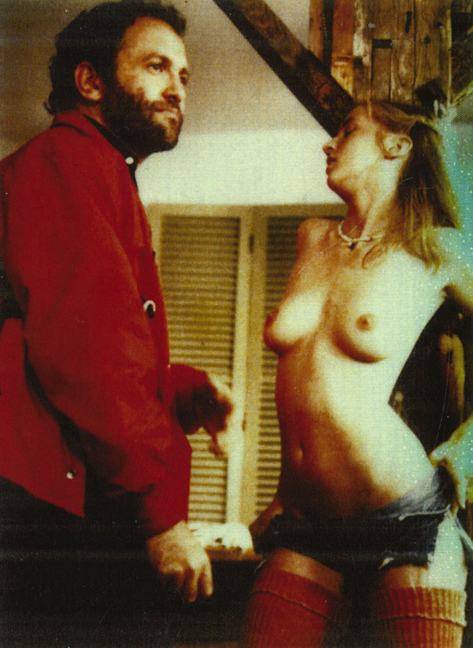 R Bolla, Lysa Thatcher on the set of ‘American Desire’ (1981)
R Bolla, Lysa Thatcher on the set of ‘American Desire’ (1981)
I also made friends with Roy Stuart who took me to this S&M club called ‘Castle of O’ with hundreds of men in the audience. Roy took part in the show there and was immense, so I gave him the part of the rapist in the film.
Roy did the music for the film as well. He’s a fantastically talented man, and went on to be a world famous artistic photographer.
How about the female parts?
Roy introduced me to Lysa Thatcher who was only 18 but somehow seemed even younger.
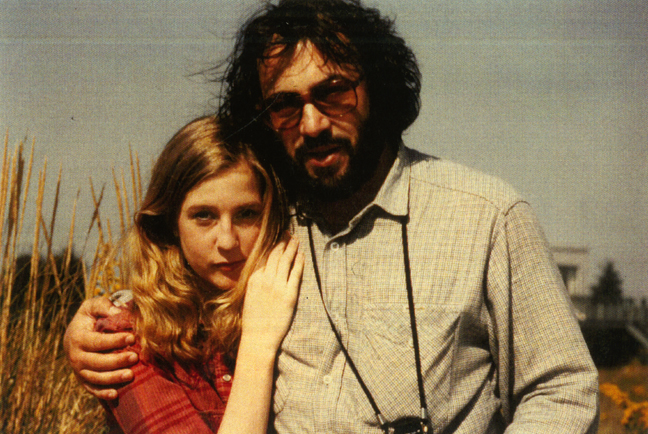 Lasse Braun, Lysa Thatcher on the set of ‘American Desire’ (1981)
Lasse Braun, Lysa Thatcher on the set of ‘American Desire’ (1981)
Then I got an invitation from an actress, Mai Lin, to go to dinner with her. She arrived in a limousine and she looked incredibly beautiful. We had a brief love affair that started in the limo on the way back to the Mayflower… She was keen to have a part in the film so I was happy in include her.
How about the starring role?
I wanted Candida Royalle or Veronica Hart because they were both beautiful and could act. In the end I chose Veronica. I’m pleased that I chose her because she met her future husband, Michael Serigliano, on the set, as he was the lighting director.
Veronica was in the rape scene with Roy, which was controversial at the time. But what people didn’t realize was that it was the only scene that was actually soft core. The audience was convinced that they had seen a penetration scene but it wasn’t hard-core – which was a tribute to the cinematography and the editing.
The film looked great. It was technically well made and I liked it.
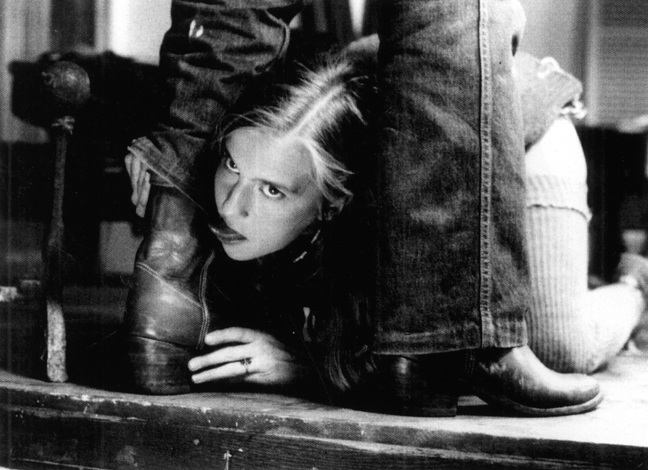 Lysa Thatcher in ‘American Desire’ (1981)
Lysa Thatcher in ‘American Desire’ (1981)
How was the film received?
Edi Stockli took the film to the Cannes film festival in 1981, and the critics liked it. When it came out in the theaters in Europe it did well. I remember seeing that it made more money than the Indiana Jones movie in Germany one week!
Were the producers, Edi and Ulli, interested in financing other films with you?
They weren’t sure if there was a theatrical market for films like mine any more. They gave me $50,000 to make a cheap 16mm film called ‘Un Folle Amore’ (1981).
I went to Rome to make it, and I hired Laura Levi, who was the top porno star there at the time, to be the star.
Were you concerned about making an X-rated film in Italy – just after you’d been given an amnesty?
…and it was still technically illegal to make a porn film in Italy! I chose to film it in August 1981 – because the summer in Italy is dead, and the police disappear completely… We had no problems.
How did you deal with a much lower budget?
It wasn’t easy. It wasn’t up to the normal Lasse Braun standard. The budget was too small.
In fact Edi and Ulli didn’t like it. They released it in Germany with the stupid name ‘Italo Sex’, and they decided that they would stop investing in new films. A few years later it was re-issued with another name on video, so they made their money back.
I decided that until I could work with proper budgets, I would stop as well.
*
13. Reuben Sturman and the Video Age (1982 – 1990)
So what did you do in the early 1980s?
I made deals to get my films released on videocassette. Then I got married for the third time, this time to an American photographer who hated pornography. I travelled around the world – and lived in Paris, Greece and other places. I invested in a few TV and film projects but they came to nothing… and then my money started to run out.
What did you do?
I went back to my old friend Reuben Sturman. I met him in New York in 1985, and he offered me a deal to make six films on video. He had a partnership with Walter Gernert (aka Walter Dark).
Walter Genert, had founded VCA Pictures with Russell Hampshire, and subsequently, as ‘Walter Dark’ and one half of the Dark Brothers, produced successful shot-on-video films, such as ‘Black Throat’ (1985), ‘Let Me Tell Ya ‘Bout Black Chicks’ (1985) and ‘New Wave Hookers’ (1985).
Reuben and Walter were excited about how cheap it was to make video films. I hadn’t had any experience of it, and I didn’t like the idea of my films not being shown in theaters. They were insistent that it would be a good experience.
What was the deal they offered you?
They wanted me to make six feature length films on video for $150,000. They would give me a fee of $30,000 plus travel and accommodation expenses to shoot them all in New York. I also asked for the videocassette distribution rights in Germany – because I knew I could make a lot more money there.
What about creative control?
I could do whatever I wanted. I could hire whoever I wanted. Actually I ended asking Reuben and Walter for an experienced production manager because I knew that the FBI would be trying to bust me for anything. I wanted someone else to hire the actors, make payments, etc. and I was especially concerned about hiring girls from California and then bring them across state lines for ‘immoral purposes’, which was a crime in the United States.
Who did they recommend?
They got me Ron Dorfman (aka Art Ben) – a bearded New Yorker who’d been shooting porn films for ten years in New York. He and his wife had a home / office on the Upper West Side. Art knew everyone and made things happen quickly.
How much time did you have?
It was crazy. Reuben and Walter made me the offer at the end of June 1985, and they wanted the films by mid-September!
In July I wrote all the scripts myself, and then I had to cast all the parts.
Who do you remember from the casting process?
Let’s see – Kristara Barrington was so beautiful; she was an American / Korean girl with a great body that we flew in from California. And we brought in Stacey Donovan as well. Both of them were well known porn stars.
My favorite was Siobhan Hunter. She was from upstate New York, and was working as a call girl in the city. She hadn’t made porn films before. She had a lot of class.
I also brought in reliable guys like Paul Thomas and Joey Silvera for the male leads.
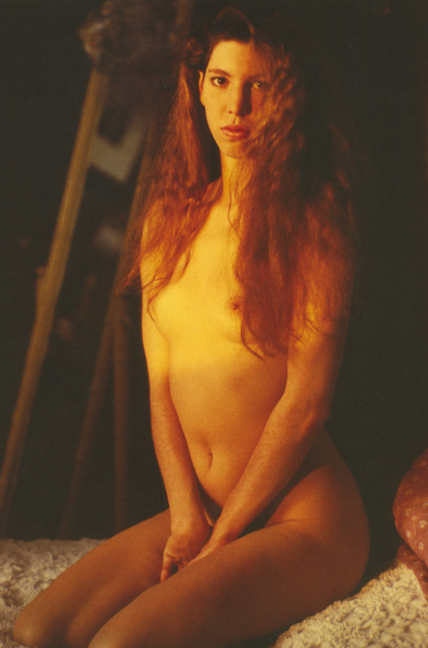 Siobhan Hunter (photo courtesy of Barbara Nitke)
Siobhan Hunter (photo courtesy of Barbara Nitke)
How easy did you find it to work with video compared to film?
I used two JVC Betacam cameras at the same time; they were the same ones that TV crews used at that time. It was a lot quicker to make a film on video, but I still didn’t like the appearance of it.
We shot the first three in New York in seven days – that was ‘Secret Mistress’, ‘Flasher’, and ‘Young Nympho’.
Then we shot the remaining three (‘Temptations of the Flesh’, ‘Deep and Wet’ and ‘Hidden Fantasies’) in three days in a big house in New Jersey.
Then Art and I edited them, added music, and I gave them to Reuben and Walter on budget and on time.
It was hard work.
Did you make much money for them in Germany?
I sold them straight away for about $50,000 – so it was a profitable summer.
I wish the quality of the films had been higher, but Reuben was happy.
Did this success make you want to direct more video features?
I wasn’t in love with video like I had been with film. With film I was always hungry to do another project. With video, it was interesting but it wasn’t a passion any more.
For the next five years, I lived in Italy. I got a new girlfriend, fell in love, made new friends, wrote some screenplays.
*
14. Return to California, and ‘Fantasy Nights’
Did you get offers to make films during the late 1980s?
Yes, but they usually had difficulties with the financing.
Then in 1990, an Italian company, Top Line, asked me to make two features on video. They wanted me to go to California and use the biggest stars of the porn scene there.
And they really had the money?
Of course not! But I only found this out later.
Most films were being made for less than $50,000, but I asked Top Line for $120,000 because I wanted to make something much better than the six New York films that I made in 1985.
Did they give you the full $120,000?
They gave me the first part of it, about $50,000. Enough to get started. I had two scripts: ‘Fantasy Nights’ and ‘Midnight Woman’.
You hadn’t lived in California since the 1970s so who helped you put the overall production together?
My old friend Ron Sullivan, who had become a successful director called ‘Henri Pachard’ did most of the directing, and John Leslie, who was also starting to be a successful director, was very helpful as well.
Ron and John were good friends with Alex De Renzy so we shot everything at Alex’s house in Novato, CA, and Alex was the cameraman as well.
I flew my son Alessandro (‘Ale’) over to be my assistant, and he lived in a room in Ron Sullivan’s office.
I’d met him in 1980, but during this time I got to know him well.
What was your relationship like?
He was proud of me and respected my achievements in film. He looked up to me. I liked him – he’s fit, good-looking, and intelligent. He picked things up very quickly and was eager to learn. He had passion as well – just like me when I was young. He studied martial arts and once or twice got into fights defending people. He’s a strong guy… We started giving him the porn name Axel Braun on this production.
You assembled quite an illustrious production team for ‘Fantasy Nights’.
Yes – we had the best filmmakers from the 1970s – Alex De Renzy and myself. Ron was the best from the 80s, and John Leslie was the best-selling director in the 90s. And then Ale… he’s become the best director in the world today.
What do you remember about Alex De Renzy?
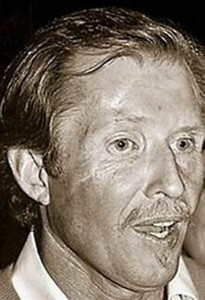 De Renzy (right) became a very good friend. He was incredibly talented and had done everything it was possible to do in the industry. Like me he’d started with loops, and then made some of the best 35mm features ever. Alex and I were always happy to see each other.
De Renzy (right) became a very good friend. He was incredibly talented and had done everything it was possible to do in the industry. Like me he’d started with loops, and then made some of the best 35mm features ever. Alex and I were always happy to see each other.
He had this great house in Novato, which is where he shot films like ‘Pretty Peaches’ and ‘Baby Face’. His family was there, his office was there, and he made his movies there. It was great.
His wife Carol was talented as well, and she helped him on all his productions.
You were also able to get a very high profile cast.
I wanted one of each type of girl, so we had Viper who was a red head, Samantha Strong who was blonde, Rachel Ryan (brown), Jeanny Pepper (black), and for the actors we got Jon Dough, Jamie Gillis, Joey Silvera, Tom Byron, Jerry Butler, Rick Savage – and John Leslie too, though we cut his scene from the final version.
We shot in Spring 1990.
So did the rest of the money come through from the Italians?
No, it didn’t come through until it was too late. I wasn’t able to make both films, so in the end ‘Midnight Woman’ just became the soft version of ‘Fantasy Nights’.
I was angry as hell. I was risking a lot – my reputation and my money – so, instead of giving the finished film to Top Line, I kept it for myself.
What did you do with it?
I sold the U.S. rights to Russ Hampshire at VCA and the French rights to Marc Dorcel.
After ‘Fantasy Nights’, you got back into making films again.
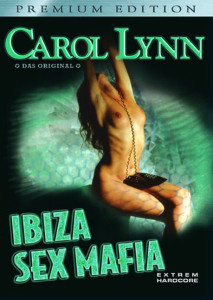 I was having fun. In the early days of my life, I was on a mission to change the world. Now I enjoyed the journey more.
I was having fun. In the early days of my life, I was on a mission to change the world. Now I enjoyed the journey more.
I went to Ibiza and made six video films in six days for Gerd Wasmund starring Carol Lynn. They were for the German market so he wanted them to be hardcore and very kinky. I got Ale to come over and be my assistant again. I got $50,000 for the week’s work, and I got the Italian distribution rights. They were called ‘Ibiza Dreams’, ‘Hotel Bizarre‘, ‘Ibiza Sex Mafia’…
And you also did your first soft-core work for television?
Yes. The money was too good to ignore.
I shot a five part series called ‘Hot Bet’ in Rome in 1991, then eight episodes of a show called ‘Diamonds’ in London and Amsterdam in 1992. We sold them to many, many countries including the Playboy Channel in the United States. They made a lot of money.
This was a time when there was a real market for soft-core films on cable TV around the world, such as channels like Cinemax.
… and I saw that, so I went back to California to make a few soft-core films. I went to see Alex De Renzy in Novato and we agreed to collaborate on three films that I had scripts for. They were called ‘Blame It On The Vodka’ (1992), ‘French Bath’ (1992), and ‘Michelle’ (1993).
Lasse Braun and Alex De Renzy working together on a series of films!
This was the big collaboration between the two pioneers of XXX! I would produce them, cast them, and finance them, and he would direct them. Historic! We made all three for $120,000.
It’s ironic that when the two of you finally worked together it was on films that were soft core…
That’s where the money was at the time. We could sell the soft films internationally to so many countries, so we made much more money.
And we kept Alex’s involvement secret by using a pseudonym, ‘Alec Edwards’, so that his porno notoriety wouldn’t affect potential buyers. People still don’t realize that we made those films together.
Were you present on set when he made these films?
No, whilst Alex was making the three films at his house, I got $180,000 to make two other soft-core films – ‘Tender Blue Eyes’ (1992) and ‘First Love’ (1992). I went to Utah and shot them in Park City and Salt Lake City.
Who was financing these American soft-core films?
Horst Peter in Germany financed all of the soft-core work I did. He’d bought my films in the early days, and then went on to run a German sex empire.
Did you ever have any contact with Reuben Sturman in the 1990s?
The last time I saw Reuben was at one of his Doc Johnson stores in North Hollywood. He was preparing to go to jail because he was suspected of bombing a sex store owner that he was in dispute with. Plus he had been arrested for tax evasion.
I considered him my oldest and most respected friend from the early days. I knew I probably wouldn’t see him again. I was very sad and we hugged and said goodbye.
I cried a few years later in 1997 when I heard he’d died. He was the most important person for me and my career. I loved him.
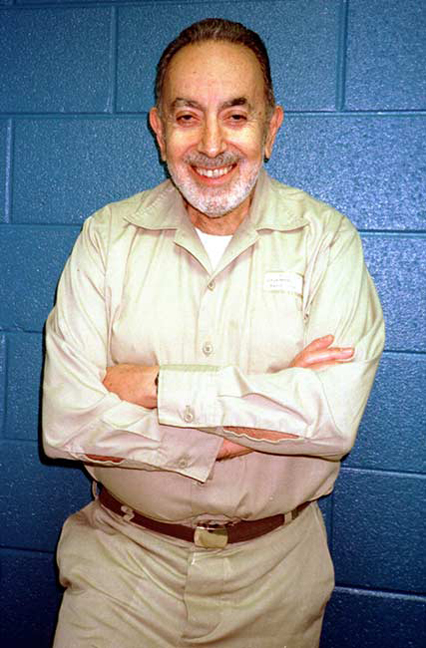 Reuben Sturman in prison, mid 1990s
Reuben Sturman in prison, mid 1990s
*
15. Lasse Braun and Axel: The Braun ‘Dynasty’
For the final films of your career, you went back to hardcore. How did this come about?
Part of the motivation was that I wanted to create a ‘Braun’ dynasty that would be continued by my son, Ale. We actually shot a series of gonzo films in Budapest that I called ‘MasterSex’. It was like ‘French Blue’ – because I acted as the director in them. I was shown picking girls up and explaining what I wanted them to do with the actors.
Then I went to Russ Hampshire at VCA and he offered us $30,000 to make a 90 minute video feature. He said I could do whatever I wanted to as long as there were no nuns or priests, rape or S&M, golden showers, or anything like that. He remembered my European loops, and he knew me well!
Ale and I wrote ‘Uncontrollable Lust’ (1997) together.
My plan was for Ale and I to develop a ‘Braun’ production house that would be funded by VCA and would make many films for them. I had lots of scripts ready to film, and I was also thinking of making a sequel to ‘Sensations’. It would be a father and son business.
How did you share production duties with Ale on ‘Uncontrollable Lust’?
We each had a Sony camcorder, and we both filmed all the action. I was effectively the first cameraman, he was the second.
Casting was easier nowadays than when you started…
You bet – we had Jim South! He provided us with a lot of people, and we cast Stephanie Swift, Chelsea Blue, and Roxanne Hall.
Despite all your many years of experience, this was your first ‘conventional’ hardcore feature in the United States – how did it turn out?
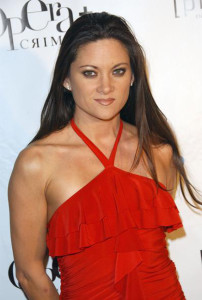 It was a hot film. We had a dp with Stephanie Swift (right) that was very erotic. It ended up being 120 minutes long, but Russ like it and so I started talking with VCA about more films that Ale and I could make.
It was a hot film. We had a dp with Stephanie Swift (right) that was very erotic. It ended up being 120 minutes long, but Russ like it and so I started talking with VCA about more films that Ale and I could make.
The problem was that Ale then cut his own deal with VCA behind my back to make two films by himself in Europe, and he left without telling me anything.
What was your reaction?
With the ‘Axel Braun’ name, I knew that he’d be successful but it stopped my dreams of creating a Braun dynasty. I was disappointed because I knew that we’d be able to make more money my way.
What did you do?
I waited for him to come back. I thought he’d be back soon, but he didn’t come back for a couple of years.
I didn’t want to lose sight of the big picture so I just waited for him.
I became friends with Reuben Sturman’s son David, who had his own company, General Video of America. He offered me $150,000 to make three features, so I made ‘Night and Day’ (1998), and then ‘Intrigue’ (1998) and ‘Possession’ (1998) back to back with the same cast and locations.
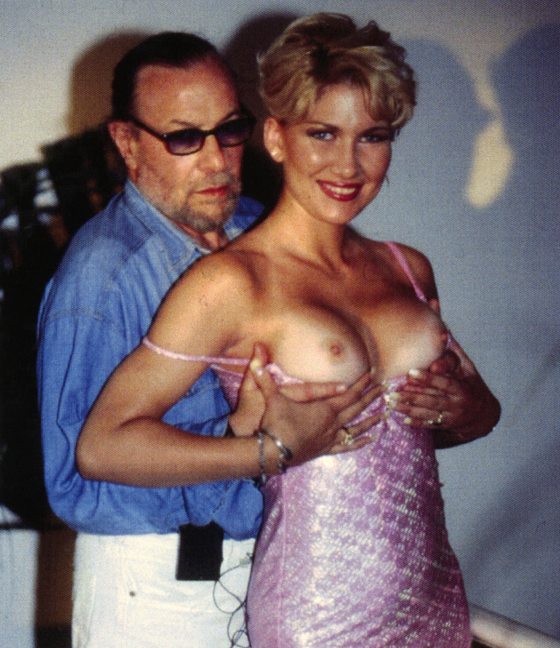 Lasse Braun, Christina Angel on the set of ‘Possession’ (1998)
Lasse Braun, Christina Angel on the set of ‘Possession’ (1998)
And these films were made without Ale?
Yes – Ale was in Europe making his own films for VCA.
Was David Sturman as good a partner as his father had been?
Not really. He insisted on using these older, heavier Betacam video cameras and taking $8,000 for them out of the budget. It was already difficult to make the films with such small budgets, so when I finished them I also ended my relationship with David.
These were your final films?
Yes. Ale came back from Europe and he’d formed ‘Axel Braun Productions’. He’d become a good director and was having a great time making films. I was just happy that he was doing well and I realized that my plans for a ‘Braun’ dynasty weren’t right for him at that time in his life. We spent time together and our relationship was good.
I heard that you all appeared on the Jerry Springer show at that time. Is that true?!
Yes, that was Ale’s girlfriend’s idea. We arranged for her to appear with Ale, and for her to declare that she had fallen in love with me, her stepfather. Then I came on stage and we all argue. It worked out well. It was funny.
By now you’re considered a senior citizen of the adult industry, and a documentary was made about your life called ‘I Was the King of Porn… The Adventurous Life of Lasse Braun’ (2003). What did you think of it?
It was ok. The first part was reasonable, but it was not very professionally done, and in the second half they added interviews with people that I asked them not to include.
Like who?
Gerd Wasmund for example.
What have you been doing since you stopped making films?
Mainly writing. I write every day. I published my masterwork ‘Lady Caligula’ and have published many other books since then.
How do you view your contribution to creation of the adult film industry?
Quality was always my driver – it depressed me when this fell away.
Once porn became an industry, there was no way that it could be creatively relevant any more. I liked it best when you had to take risks and be dangerous. It’s no longer a form of art. That is sad. We could have done more.
I was the first, I was the original. For a time, I was the king of Porn.
*
Lasse Braun passed away on February 16, 2015.
*
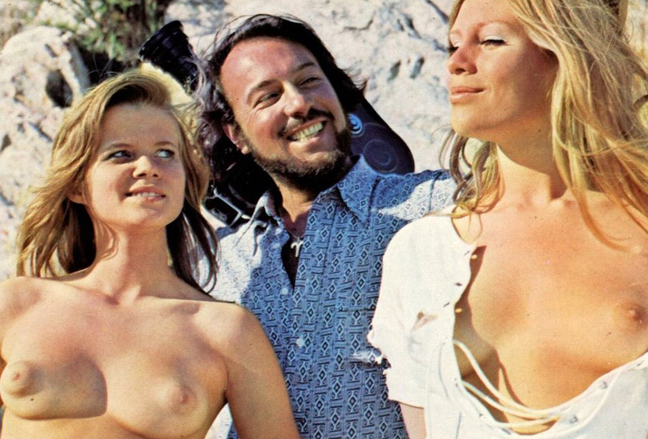
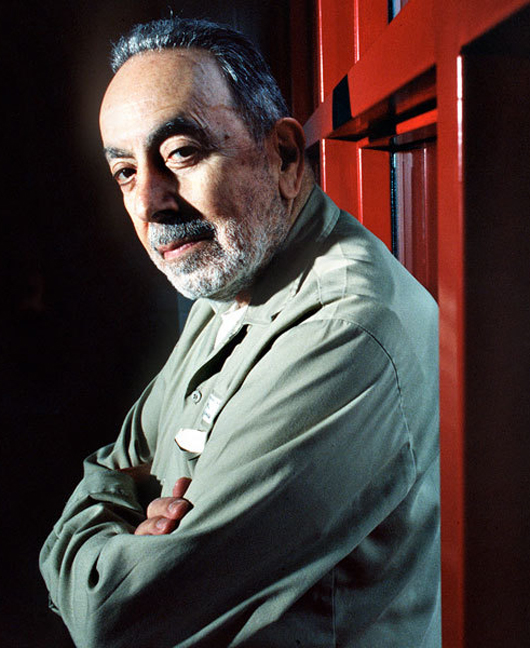
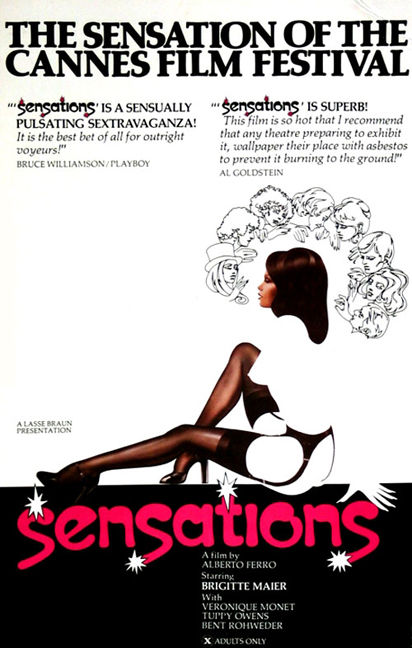
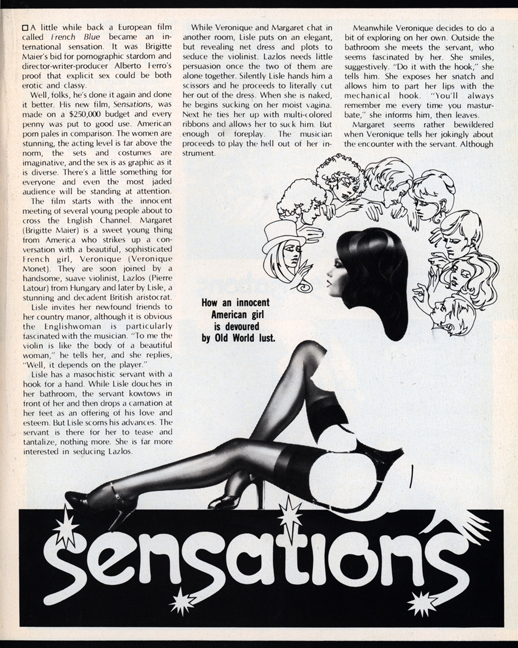
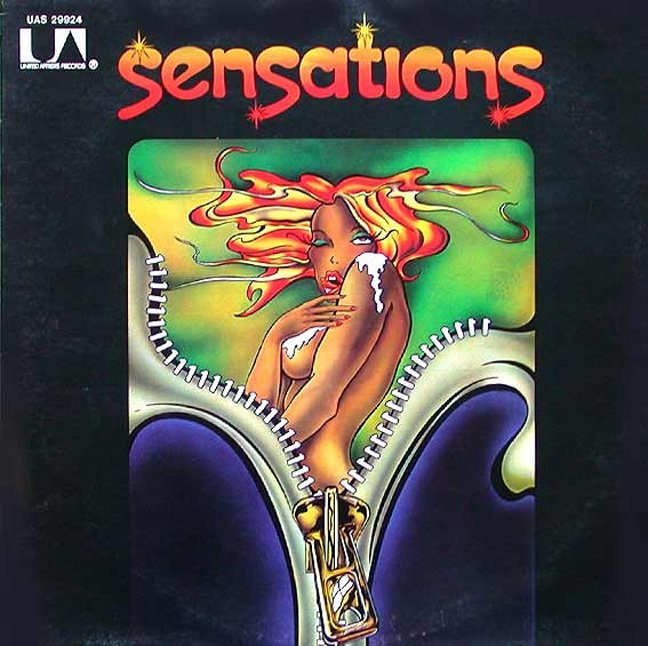
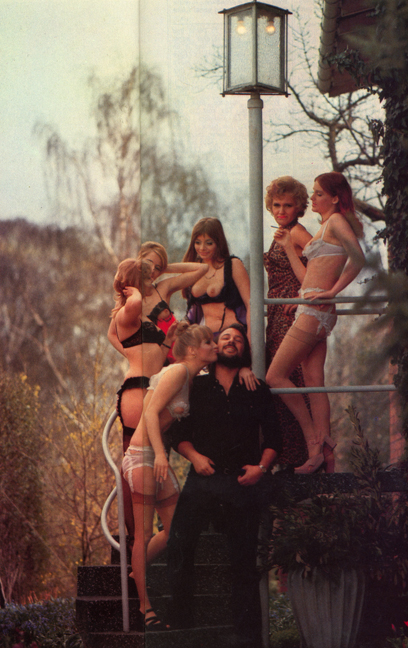
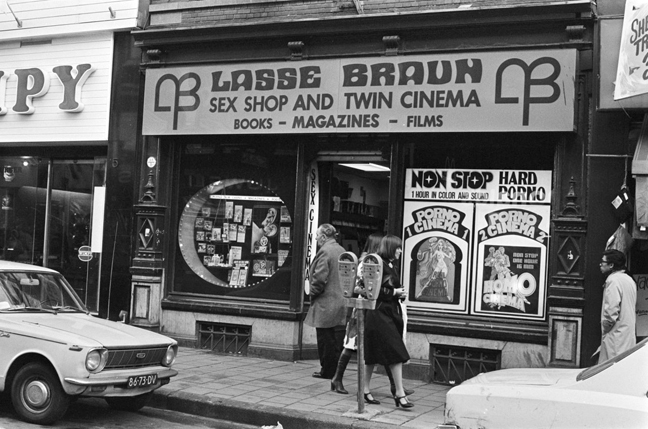
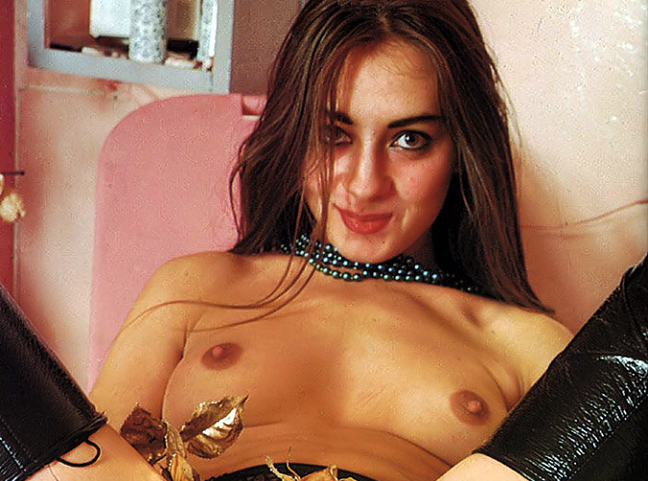
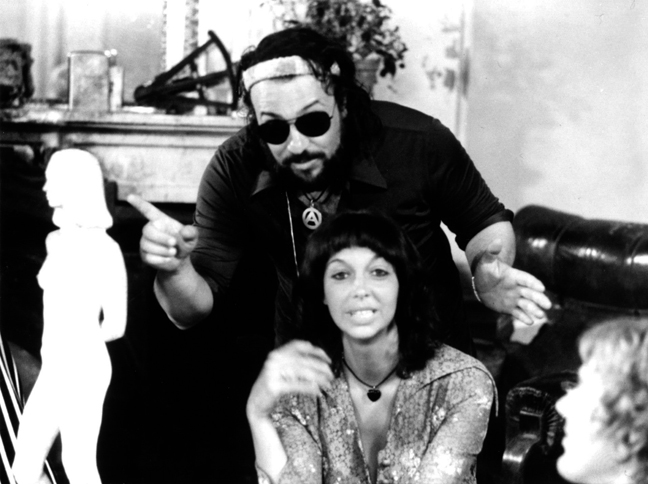
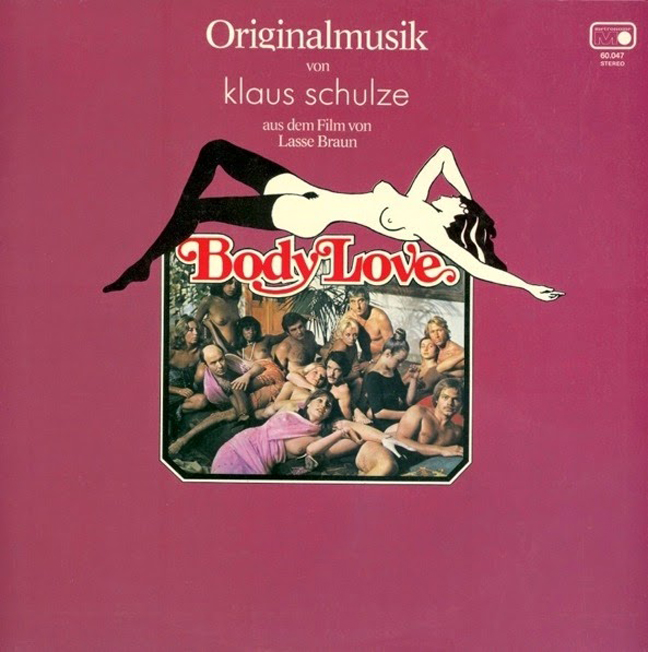
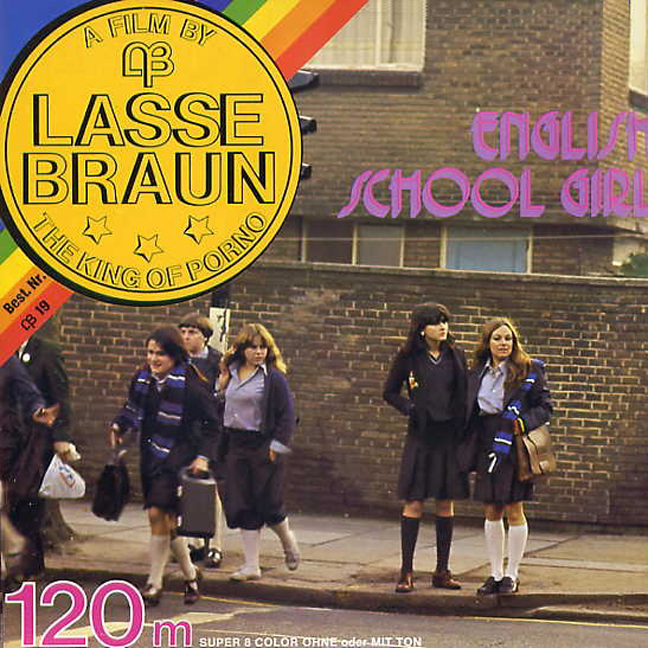
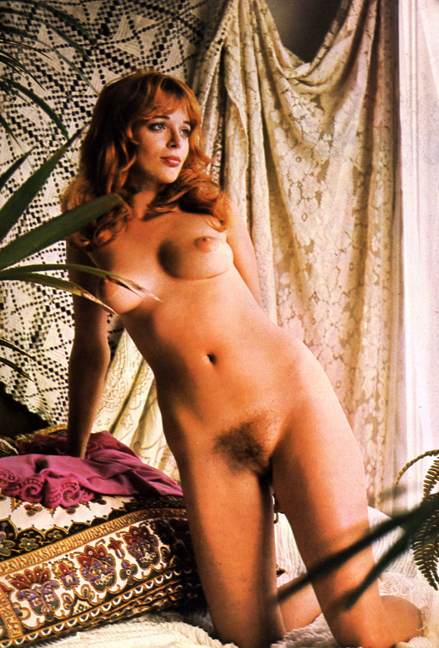
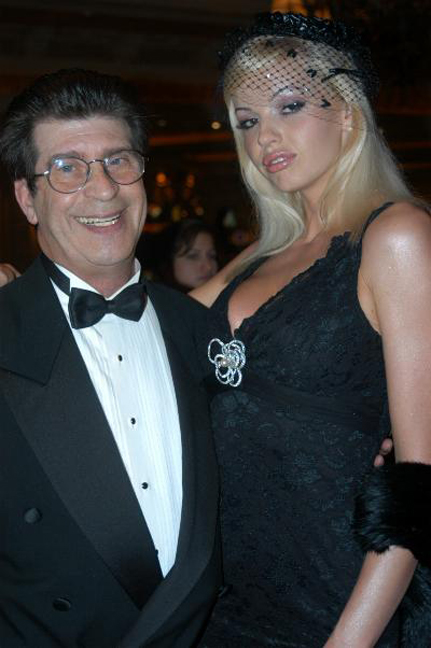
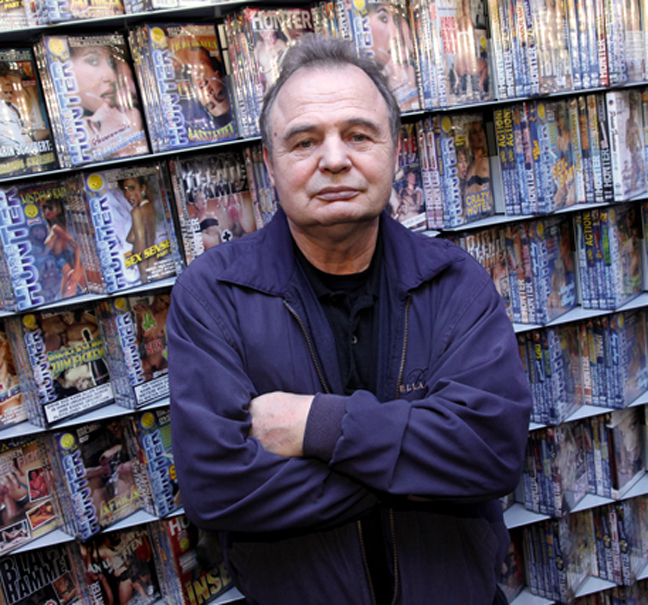
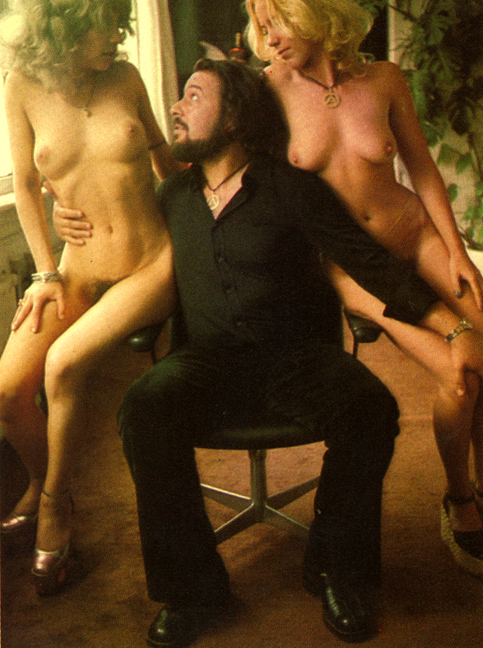
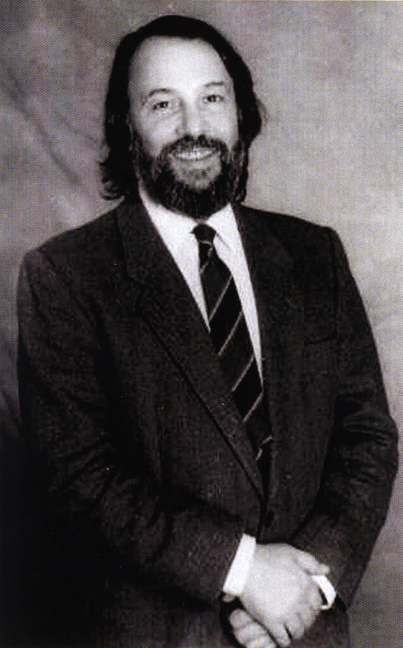
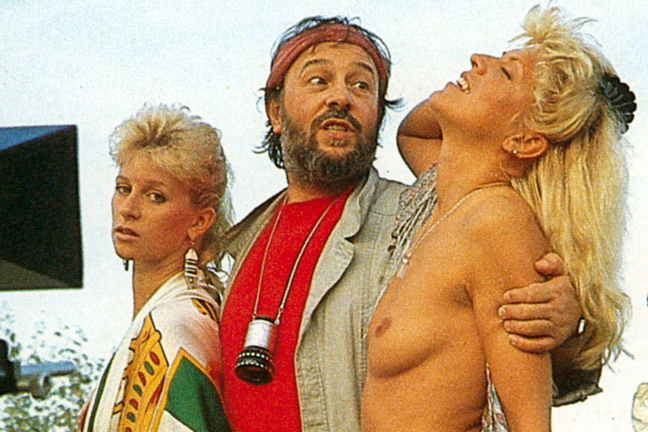
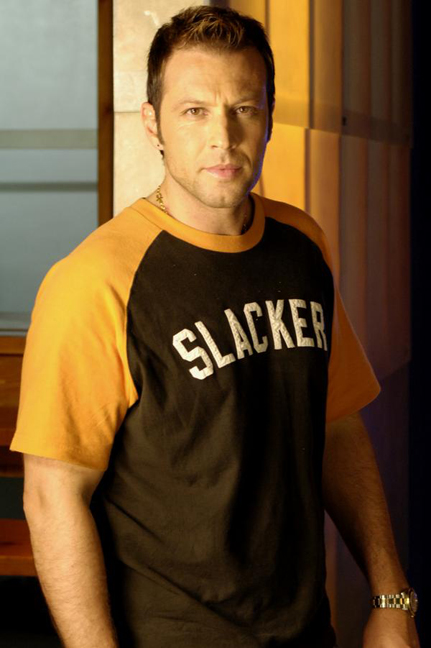
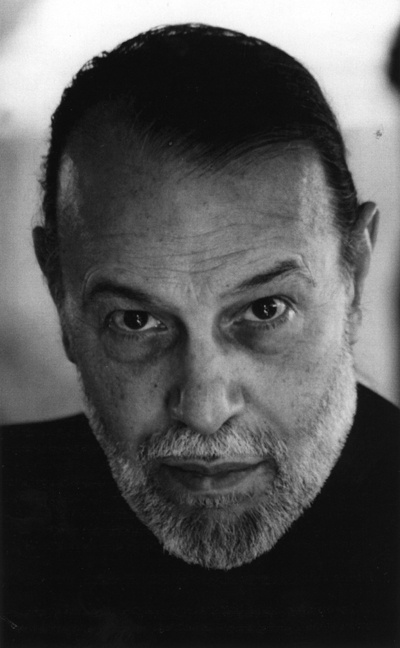

Apart from wanting to be the first to comment on another Rialto masterpiece, I want also to say that this (and the first part) is an exceptional retrospective of a great force in the adult film industry. Truly a significant contribution to the research of this field. Respect to you.
I have a complete collection of LB Production films and it took me 20 years to accumulate them all. They have a spirit that is missing in all of today’s films – XXX and mainstream. RIP Il Re Del Porno.
And I was beginning to wonder if you’d ever be back with the second half. I needn’t have worried – this delivers on many fronts and fills in a number of gaps that I had wondered about. I’m still curious about the documentary he made on a new drug that he refers to – anyone have any idea what this is?
Sensational interview.
First of all – thanks again, for keeping Alberto (in our memories) “alive”.
This is once again a masterpiece in terms of journalism! A little note nor to Gerd Wasmund;
Gerd Wasmund aka Mike Hunter has today in Cologne (Germany), a video library. The image of him comes from an article in the German edition of Vice magazine. So if anyone can German here is the article:
http://www.vice.com/de/read/nsfw-der-porno-king-mike-hunter-dolly-buster
A brilliant and fitting ending to a career-spanning interview.
With this interview, I felt so many threads connecting, especially Braun’s relationships with Walter Gernert, Hampshire, and VCA. Fascinating revelation, too, that Gerd Wasmund was “Mike Hunter”.
Wasmund was a printer before going into business with Braun/Ferro, and had printed some porno magazines. His company went bankrupt before he made a proposal to Braun, and he even started up a toy shop at one point to stay afloat. It didn’t last.
Excellent to see the contributions of Beate Uhse and her son Ulli to Braun’s career. Braun was truly an international pornographer, and aligned himself with the best.
Horst Peter went on to run Silwa, a major producer of magazines and videos that was in direction competition with Peter Theander’s Color Climax Corporation. He handled Caballero material at one time, too, and ran Videorama.
It was a pleasure to work in “Deep and Wet “
A great look inside a great man.
thnks!
Was glad to find that he enjoyed a career makeover here in the states. It wasn’t as easy for old timers by the time video came along. Although film was a pristine medium for the pioneers, the clarity of the HD digital age was wasted on gonzo and came decades too late. Just imagine if it had only been around at the Big Bang of X in the 60s.
It was worth the wait! One of the better interviews from RR, enjoyed every letter and image.
One detail puzzles me a bit: Alberto claims that Klaus Schulze saw a rough cut of “Body Love” and as a result asked if he could score it. Yet in the liner notes of the remastered CD, it states that Alberto had already edited the film and used some of Klaus’ albums (“Timewind” and “Moondawn”) as a temp track and it was his idea to ask Klaus for an original soundtrack, because earlier efforts to incorporate contemporary pop music didn’t work out.
Does anyone have some more info on this?
Another indispensable brick in the building housing
the history of this industry/artform(you could debate
his point all night!). It will, as everything else on this
site most certainly be,extremely important for
Future cultural historians. Critical.
Braun’s last answer in the interview perfectly sums up the Golden Age of Porn vs. today’s internet-based sex scenes. Great interview!
I wonder what became of Brigitte Maier life.
Really enjoyed this. I’d like to hear more about the in’s and out’s (no pun intended) of his UK movies. What Tim Blackstone, Brett Shaw, Lisa Taylor etalwere like and any interviews with thier aspects. Terrific essay though! Love this chaps work. And love yours even more!